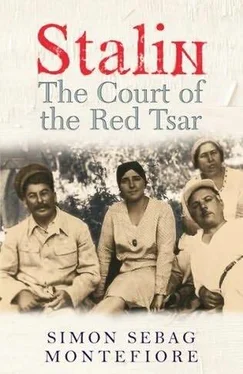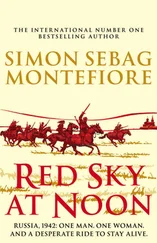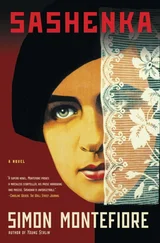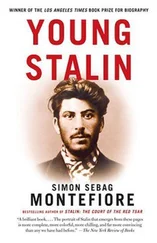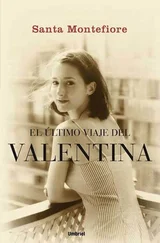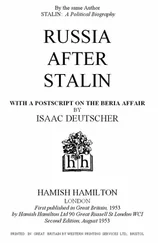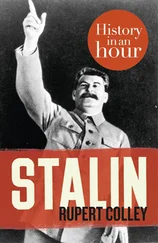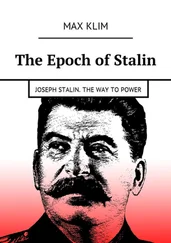There was a fearsome storm in Sochi: “The gale howled for two days with the fury of an enraged beast,” wrote Stalin. “Eighteen large oaks uprooted in the grounds of our dacha…” He was happy to receive the children’s letters. “Kiss them from me, they’re good children.”
Svetlana’s note to her “First Secretary” commanded: “Hello Papochka . Come home quickly—it’s an order!” Stalin obeyed. The crisis was worsening. 28
6. TRAINS FULL OF CORPSES
Love, Death and Hysteria
The peasants ate dogs, horses, rotten potatoes, the bark of trees, anything they could find,” observed one witness, Fedor Belov, while, on 21 December 1931, in the midst of this crisis, Stalin celebrated his birthday at Zubalovo. “I remember visiting that house with Kliment on birthdays and recall the hospitality of Joseph Vissarionovich. Songs, dances, yes, yes, dances. All were dancing as they could!” wrote the diarist Ekaterina Voroshilova, Jewish wife of the Defence Commissar, herself a revolutionary, once Yenukidze’s mistress and now a fattening housewife. First they sang: Voroshilova recalled how they performed operatic arias, peasant romances, Georgian laments, Cossack ballads—and, surprisingly for these godless ruffians, hymns, learned in village churches and seminaries.
Sometimes they forgot the ladies and burst into bawdy songs too. Voroshilov and Stalin, both ex-choirboys, sang together: Stalin “had a good tenor voice and he loved songs and music,” she writes. “He had his favourite arias”—he particularly liked old Georgian melodies, arias from Rigoletto , and he always wanted to hear the hymn from the Orthodox liturgy, Mnogaya leta . He later told President Truman, “Music’s an excellent thing, it reduces the beast in men,” a subject on which he was surely something of an expert. Stalin’s pitch was perfect: it was a “rare” and “sweet” voice. Indeed, one of his lieutenants said Stalin was good enough to have become a professional singer, a mind-boggling historical possibility.
Stalin presided over the American gramophone—he “changed the discs and entertained the guests—he loved the funny ones.” Molotov was “dancing the Russian way with a handkerchief ” with Polina in the formal style of someone who had learned ballroom dancing. The Caucasians dominated the dancing. As Voroshilova describes it, Anastas Mikoyan danced up to Nadya Stalin. This Armenian who had studied for the priesthood like Stalin himself, was slim, circumspect, wily and industrious, with black hair, moustache and flashing eyes, a broken aquiline nose and a taste for immaculate clothes that, even when clad in his usual tunic and boots, lent him the air of a lithe dandy. Highly intelligent with the driest of wits, he had a gift for languages, understanding English, and in 1931, he taught himself German by translating Das Kapital .
Mikoyan was not afraid to contradict Stalin yet became the great survivor of Soviet history, still at the top in Brezhnev’s time. A Bolshevik since 1915, he had proven his ruthless competence in the Caucasus during the Civil War. He was captured with the famous Twenty-Six Commissars—yet typically he alone survived. They were all shot. He was now the overlord of trade and supply. [39] Mikoyan was the Vicar of Bray of Soviet politics. “From Illich [Lenin] to Illich [Leonid Illich Brezhnev],” went the Russian saying, “without accident or stroke!” A veteran Soviet official described Mikoyan thus: “The rascal was able to walk through Red Square on a rainy day without an umbrella [and] without getting wet. He could dodge the raindrops.”
Svetlana, Stalin’s daughter, thought him the most attractive of the magnates, “youthful and dashing.” He was certainly the finest dancer and sharpest dresser. “One was never bored with Mikoyan,” says Artyom. “He’s our cavalier,” declared Khrushchev. “At least he’s the best we’ve got!” But he warned against trusting that “shrewd fox from the east.”
Though devoted to his modest, cosy wife Ashken, Mikoyan, perhaps trying to include Nadya in the festivities, “for a long time scraped his feet before Nadezhda Sergeevna, asking her to dance the lezginka [a traditional Caucasian dance that she knew well] with him. He danced in very quick time, stretching up as if taller and thinner.” But Nadya was “so shy and bashful” at this Armenian chivalry that she “covered her face with her hands and, as if unable to react to this sweet and artistic dance, she slipped from his energetic approaches.” Perhaps she was aware of Stalin’s jealousy.
Voroshilov was as light-footed a tripper on the dance floor as he was a graceless blunderer on the political stage. He danced the gopak and then asked for partners for what his wife called “his star turn, the polka.” It was no wonder that the atmosphere among the magnates was so febrile. In the countryside, the regime itself seemed to be tottering. 1
* * *
By the summer, when Fred Beal, an American radical, visited a village near Kharkov, then capital of Ukraine, he found the inhabitants dead except one insane woman. Rats feasted in huts that had become charnel houses.
On 6 June 1932, Stalin and Molotov declared that “no matter of deviation—regarding either amounts or deadlines set for grain deliveries—can be permitted.” On 17 June, the Ukrainian Politburo, led by Vlas Chubar and Stanislas Kosior, begged for food assistance as the regions were in “a state of emergency.” Stalin blamed Chubar and Kosior themselves, combined with “wrecking” by enemies—the famine itself was merely a hostile act against the Central Committee, hence himself. “The Ukraine,” he wrote to Kaganovich, “has been given more than it should get.” When an official bravely reported the famine to the Politburo, Stalin interrupted: “They tell us, Comrade Terekhov, that you’re a good orator, but it transpires that you’re a good story-teller. Fabricating such a fairy tale about famine! Thought you’d scare us but it won’t work. Wouldn’t it be better for you to leave the post of… Ukrainian CC Secretary and join the Writers’ Union: you’ll concoct fables, and fools will read them.” Mikoyan was visited by a Ukrainian who asked, “Does Comrade Stalin—for that matter does anyone in the Politburo—know what is happening in Ukraine? Well if not, I’ll give you some idea. A train recently pulled into Kiev loaded with corpses of people who had starved to death. It had picked up corpses all the way from Poltava…”
The magnates knew exactly what was happening: [40] Beal, the American, reported to the Chairman of Ukraine’s Central Executive Committee (the titular President), Petrovsky, who replied: “We know millions are dying. That is unfortunate but the glorious future of the Soviet Union will justify it.” By 1933, it is estimated that 1.1 million households, that is seven million people, lost their holdings and half of them were deported. As many as three million households were liquidated. At the start of this process in 1931, there were 13 million households collectivized out of roughly 25 million. By 1937, 18.5 million were collectivized but there were now only 19.9 million households: 5.7 million households, perhaps 15 million persons, had been deported, many of them dead.
their letters show how they spotted terrible things from their luxury trains. Budyonny told Stalin from Sochi, where he was on holiday, “Looking at people from the windows of the train, I see very tired people in old worn clothes, our horses are skin and bone…” President Kalinin, Stalin’s anodyne “village elder,” sneered at the “political impostors” asking “contributions for ‘starving’ Ukraine. Only degraded disintegrating classes can produce such cynical elements.” Yet on 18 June 1932, Stalin admitted to Kaganovich what he called the “glaring absurdities” of “famine” in Ukraine.
Читать дальше
